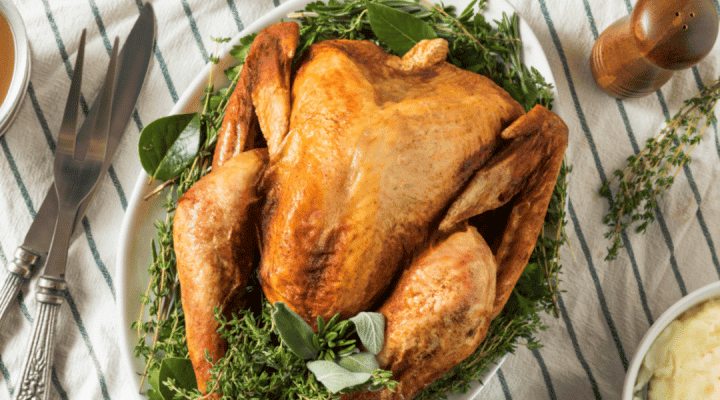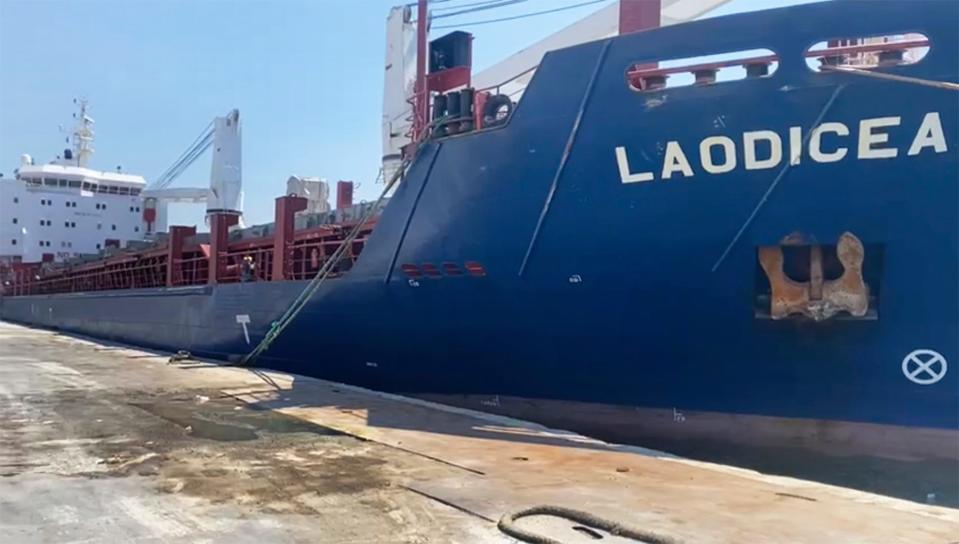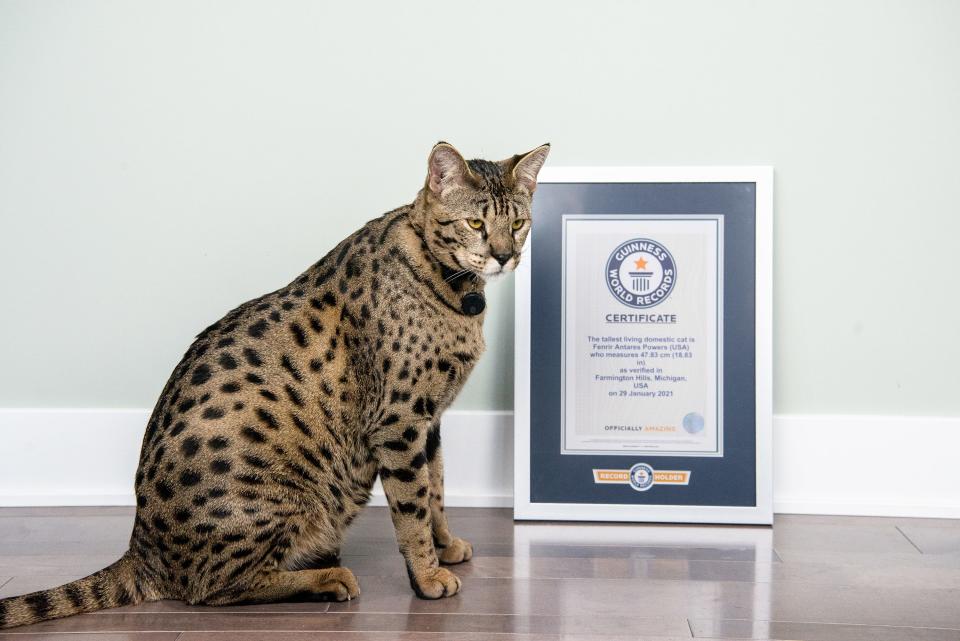In Ag. & Eco: Turkey prices, Russia steals grain to fund war, tallest domestic cat and more
- Oops!Something went wrong.Please try again later.
Howdy, y'all!
I'm Brandi D. Addison, the regional agriculture and natural resources reporter for the USA TODAY network in West Texas, covering all things from the earth to the sky — and this is your weekly agriculture and eco news round-up.
Launched in September 2022, "In Ag. & Eco" brings a small collection of informative, unique, and sometimes just weird, agriculture and environmental news from around the world to our readers.
Among this week's topics: Record-high turkey prices, researching vampire bats, a really tall cat and a couple's battle with a carbon capture company.
Increased turkey prices

Turkey prices are at a record-high due to the impacts of national inflation rates and a turkey shortage due to bird flu, according to the Wisconsin State Farmer.
The retail price for fresh boneless, skinless turkey breast reached a record-high of $6.70 per pound last month — reporting a 112% increase year-over-year.
The previous record was set at $5.88 per pound in November 2015, during the 2015 highly pathogenic avian influenza (HPAI) outbreak.
Russia steals Ukrainian grain

An investigation by The Associated Press and the PBS series "Frontline" has confirmed previous allegations from Ukrainian diplomats that assert the bulk cargo ship, Laodicea, carried about 10,000 metric tons of Ukranian grain that Russia stole from their country.
In an AP article that the Lubbock Avalanche-Journal republished, journalists Michael Biesecker, Sarah El Deeb and Beatrice Dupuy reported that, while Moscow called the allegation "false and baseless," the Laodicea is part of an operation that the Russians used to steal about $530 million worth of Ukrainian grain and helped fund President Vladimir Putin's war.
Legal experts say the ongoing theft is a potential war crime, the journalists reported.
Studying vampire bats
![A tagged vampire bat (Desmodus rotundus) wears technology developed to better study bat social behavior. The sensor network technology is made possible in part by Internet of Things chips developed by Austin-based Silicon Labs. [Courtesy of Sherri & Brock Fenton]](https://s.yimg.com/ny/api/res/1.2/GnM07P2DfFNlCvT_syajgg--/YXBwaWQ9aGlnaGxhbmRlcjt3PTk2MDtoPTExNzg-/https://media.zenfs.com/en/lubbock-avalanche-journal/538e2dd60cfe155928f83a78ea845d61)
A research team of Virginia Tech students, led under assistant professor Luis Escobar, trekked their way into the Andres Mountains and lowlands of Colombia to analyze how vampire bats serve as key players in the spread of major diseases and viruses.
Staunton News Leader's social justice reporter Monique Calello reported that the team examined how vampire bats carrying the rabies virus can help scientists forecast areas where wildlife virus transmission may occur in the coming years, potentially preventing the next major epidemic.
The team received a $358,000 grant from the National Science Foundation and support from the Centers for Disease Control and Prevention, Calello reported.
The tallest living domestic cat

(I know, not technically agriculture or environment, for the sake of this column, we're still including him).
Measuring at 18.83 inches, Fenrir, a Savannah cat from Michigan, is the tallest living domestic cat — at least that's according to the Guinness World Records.
USA Today Universal NOW Reporter Saleen Martin reported that his brothers, Altair Cygnus Powers and the late Arcturus Aldebaran Powers, previously held titles for the longest tail on a living domestic cat and the tallest cat ever, respectively.
The cat is a bit taller than average-size Savannah cats; they usually measure between 14 and 17 inches, the Guinness website said.
Arcturus was also the previous title-holder for the tallest living domestic cat but died in a fire in 2017, along with the family's Maine Coon, who had the longest tail on a living domestic cat before Altair.
Couple sues carbon pipeline company
An Iowa couple has countersued Navigator CO2 Ventures, which sought an injunction that would force the couple to grant its agent access to survey their 151-acre property as part of their plan to build a carbon capture pipeline across their farm.
The company wants to determine the land's suitability as a possible route for its $3 billion pipeline, reported Donnelle Eller, the Agriculture and Energy Reporter for the Des Moines Register.
Vicki Hulse said she'll continue to fight the company because her husband, Bill, is a Vietnam veteran in poor health and no longer can. She previously told the surveyor and sheriff's deputies that he would be considered as trespassing if he enters their land.
"The Hulses' attorneys also are challenging the constitutionality of a state law that allows the developers to survey land before they've gotten regulators' approval to build the pipeline — or have been granted eminent domain powers to force unwilling landowners to sell easements allowing access for the project," Eller wrote. "If successful, the Hulses' challenge could delay developers' efforts to build pipelines in Iowa, a Drake University law professor says."
Brandi D. Addison is the Agriculture and Natural Resources Reporter for the Lubbock Avalanche-Journal. Send tips or suggestions via BAddison@lubbockonline.com or @BrandiDAddison on Twitter.
This article originally appeared on Lubbock Avalanche-Journal: In Ag & Eco: Turkey prices, vampire bats, Russia stole Ukrainian grain
